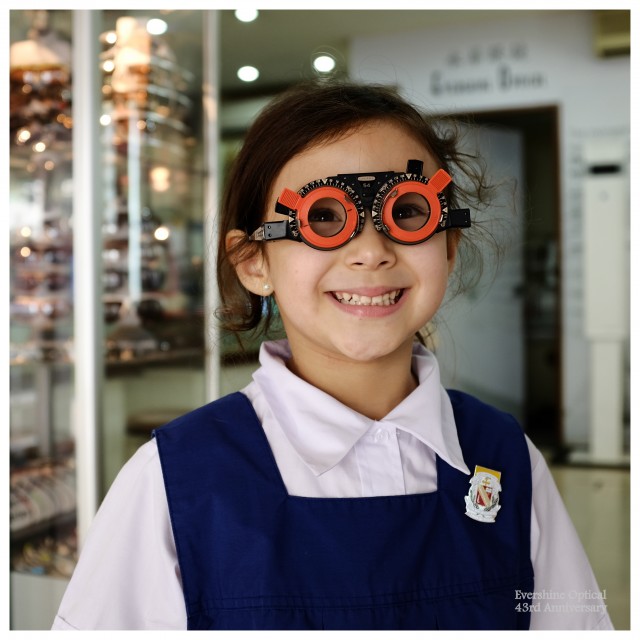At Evershine Optical, our optometrists are often asked by parents how to prevent their children’s eye sight from worsening. Will putting on the glasses prevent their child’s eye sight from worsening or improve their eye sight ?
What we do know is, poor visual hygiene will more likely cause the child’s eye sight to worsen and good visual habit can reduce eye stress and likely hood of adverse visual adaptations. Below are some tips on good visual hygiene.
- Take regular breaks during study and other sustained close work. Using a bookmark may help you get into the habit of doing this. Place the bookmark three or four pages in front of where you are reading. When you get to it, it will remind you to look up at something in the distance. Make sure it is clear, relaxing and closing your eyes for a few seconds. Look back down to your work and move the bookmark another three or four pages in front.
- Make sure you do not get too close to your work. You should not be any closer than the distance between your knuckle to elbow when placed against your nose. Again use the bookmark to remind you to check this periodically. You may not be aware of the fact that you are pulling the work closer to you as you tire.
- Good lighting for all near work is important. For maximum efficiency, use general lighting in the room so you can see distance objects easily when you look up. Two desk lamps placed on either side of your work will eliminate shadows. Be sure the quality of your lights is adequate for comfort, but not too bright. Do not read after the lights have turned out or with a torch.
- Good posture ensures that you are at that knuckle to elbow distance from your near work. Avoid reading in bed or on the floor. Sit up to read.
- Tilt your book and work surface whenever possible to achieve its presentation parallel to your face. Once all school desks were sloped to ensure this. A sloped top desk is a valuable aid to good visual function since it presents the task in a desirable position and also helps to support the body in a balanced posture. Try to obtain a desk and chair suitable to the child’s size.
- Do not sit any closer to the TV than five times the screen width or two of the child’s body lengths. Young children naturally sit very close to the TV because they want to involve all their senses. Gently encourage them to sit further away. Use adequate room lighting. It is important to note that vision develops better with active tasks such as sports and reading so children should be encouraged to limit passive TV viewing times.
- Off-set high demand tasks with outdoor games requiring adequate distance viewing, such as golf, tennis and bike riding. Do not let your child constantly read.
- Restrict close work and reading during acute illness. At such times our personal energy reserves are lower and our ability to sustain the visual stamina required will be reduced. High fevers appear to put the visual system at risk of significant change.
- Avoid reading and other sustained near activity while traveling by car. At such times, movements greatly add to your eye focus, eye pointing and teaming demands.
- When writing, a pencil grip using the thumb and the two next fingers enables best manipulation. The grip must allow visual inspection of the paper during performance. The writing material should be a aligned according to handedness on the slope to desk at correct work distance.


